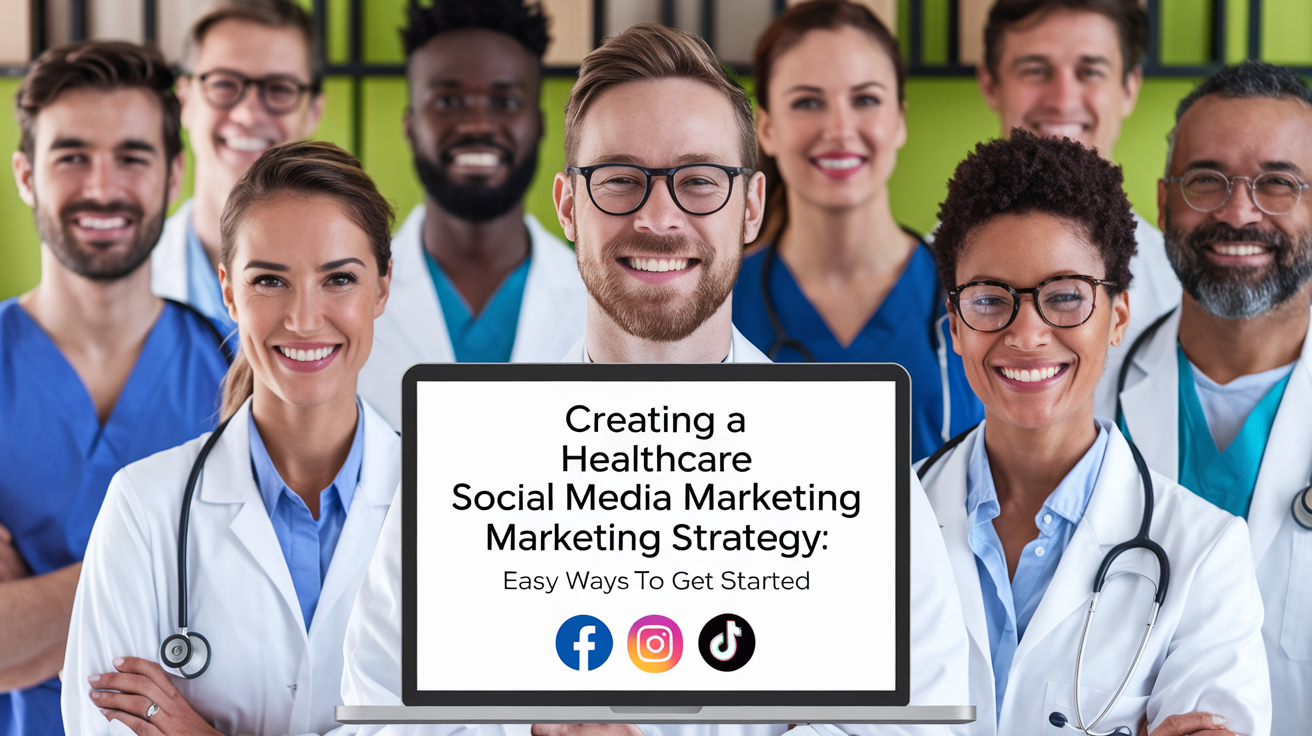No successful SEO strategy would ever be complete without local landing pages that are optimized and thoughtfully made. Here at Nomadic Advertising, know firsthand the value of these pages and take full advantage of everything they bring to the table to take our client’s websites to the next level. For example, we start by creating these web pages to help local business to reach their target audience by providing location-specific information. For businesses to improve their online visibility and attract customers, it is crucial to create and optimize local landing pages, but there definitely is a right and wrong way to follow this process.
Creating and optimizing local landing pages can be a challenging task, especially for businesses that are new to the world of SEO, but we promise you it is 100% worth it! Keep reading to find all of our professional tips and the best practices for optimizing your local landing pages.
What is a local landing page?
Local landing pages are web pages that are specifically designed to target customers in a particular location or region. The main purpose of local landing pages is to provide relevant information to individuals who are searching for specific services or products in that area.
Among other aspects, local pages should include key business information, such as;
- Its directions
- Address
- Phone number
- Hours of operation
Having this information is crucial for businesses that want to attract more local customers and improve their local SEO performance. However, this is only the beginning.
Why are landing pages important?
Landing pages are a crucial part of ad campaigns and search engine optimization. We use landing pages for specific marketing campaigns, including lead-generation efforts and product launches. This allows us to easily target visitors that are more likely to convert to customers or leads.
The following are further reasons why creating a landing page is important for local and online businesses.
- Data Insights and analysis
Landing pages provide valuable insights and data as you can track and analyze your target audience’s purchase intent and journey. If you create a Google ads campaign that links to that specific landing page, that will also provide data on which messages resonate with your target demographic and what ads have the highest conversion rates. You can also use Google Analytics to help you better understand how to engage your prospective customers and optimize your campaigns, thereby creating a perfect relationship between your advertising strategy and your web-building efforts.
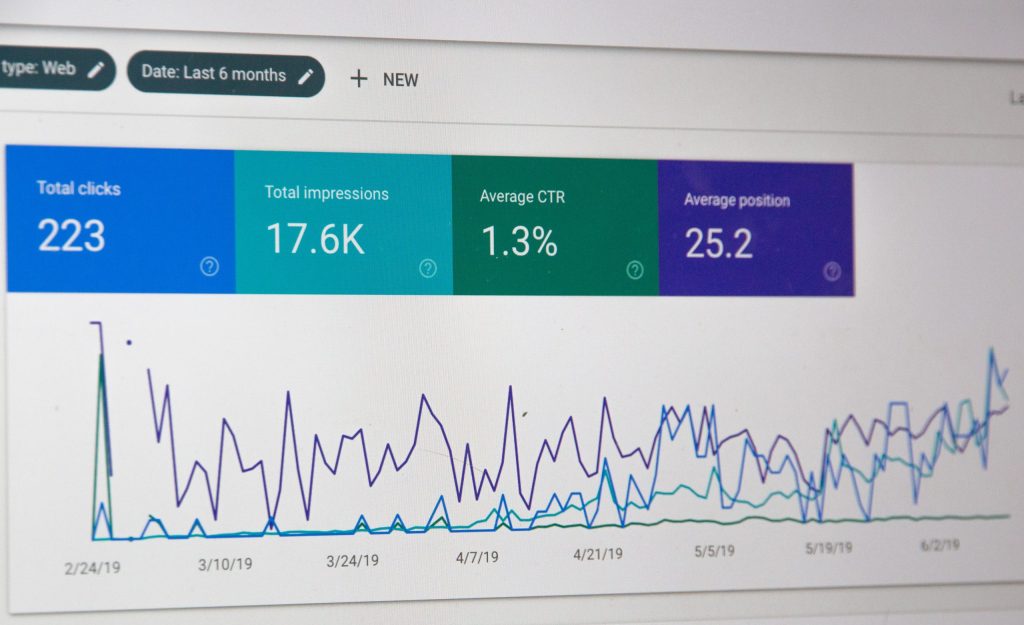
- Lead generation
Landing pages are very effective for generating leads as they provide a targeted experience. The key purpose of a landing page is to educate visitors and potential customers about your services and products. To that end, businesses can use landing pages to their advantage by encouraging their website visitor to take certain actions in exchange for a valuable offer or resource.
- Reduced bounce rates
Providing a clear and targeted message on your landing page can help reduce bounce rates. A bounce rate is the percentage of visitors who exit your site after viewing just a page. Optimizing your landing page and including CTAs (call to action) while providing visitors with valuable information can help improve the overall user experience. This will increase the likelihood that visitors will convert.
Call-to-action (CTA) buttons are buttons that potential customers can click on to get a specific action in return. “Call”, “book an appointment”, and “Contact us” are all examples of CTA buttons. Once a potential customer clicks on them, they’ll be redirected to your phone number or contact form to get in touch with your business and hopefully turn into customers.
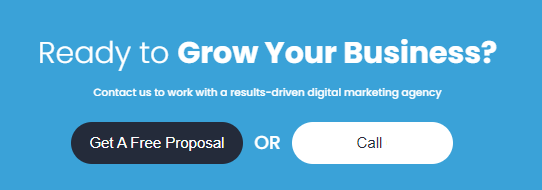
- Collect demographic data
You can use the landing page to collect valuable information about your target audience. One of the main purposes of a landing page is to get visitors to perform a certain action, such as filling out a contact form. This form typically includes demographic and personal information such as name, contact information, email address, location, etc. This provides your sales and marketing team with valuable customer data that can further your relationship with your target audience and get you closer to meeting your business goals.
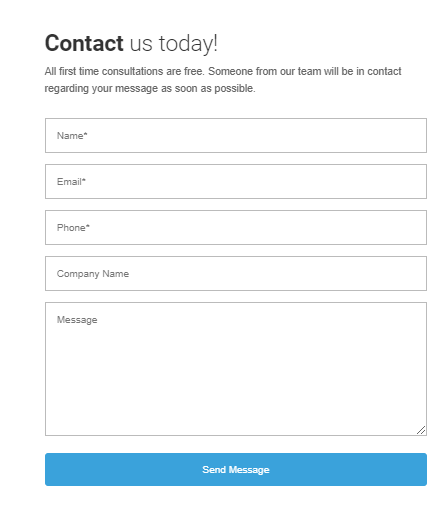
- Improved ROI
We design landing pages to achieve specific marketing goals, such as driving sales and generating leads. By optimizing your landing page, you can reduce bounce rates and increases the conversion rate. Ultimately, this will lead to a high return on your investment (ROI) for your advertising campaigns.
How many landing pages should I have on my website?
The number of landing pages you need depends on the size of your business and campaign goals. However, as a general rule of thumb, you should aim to have a separate landing page for each service or solution you offer, which in turn could mean a different landing page for each ad campaign you are trying to promote. Having several landing pages increases your chances of driving conversions.
Furthermore, creating separate landing pages ensures that your messaging is highly focused on the specific interests of your target demographics. This can ultimately improve your marketing effort enabling you to hit your target milestones and improve your conversion rates. That being said, you don’t necessarily need to create a new landing page for every marketing campaign. You should focus more on creating landing pages for your major campaigns and offers. Then, continually refine and optimize the landing pages over time based on analytics and results.
Building a local landing page
Since Google has become more focused on user intent and not only keyword optimization, local landing pages have become essential. Here we will guide you on how to create local landing pages that rank well and will significantly boost your marketing campaigns:
Step 1: Identify and define the goal of your local landing page
When building a local landing page for your business, it is important to define its goals and purposes. What actions do you want the visitors on your site to perform? Do you want them to make a purchase or contact your business? Should they visit your store in person? It is important for business owners to have a clear idea of what they want to achieve with their local landing pages before building them.
Step 2: Choose a platform
We use platforms like WordPress and Wix to build local landing pages from scratch. Of course, there are several other platforms you can use to build your landing pages. Concentrate on selecting the platform that best suits your needs and skill level, but keep in mind certain features and possibilities could change depending on the platform you choose. That is precisely why we recommend WordPress to our clients, because it provides a wide range of possibilities when it comes to web building and content creation. Attempting to build your website on your own and all the necessary pages that come with that can be a challenging task, but an optimized and eye-catchy website is a definitive must if you want your business to succeed. Although we believe in you and encourage you to try this on your own, keep in mind it could be best to look for expert help to make sure your website and all the necessary landing pages are great from the start.
Step 3: Select a template
Several building platforms provide templates that businesses and individuals can use as a starting point. You can follow the directions from your platform of choice and see how many customization options are available for you.
Since we use WordPress, we can design the local landing pages ourselves using a drag-and-drop builder. This is part of our strategy that is always tailormade to fit our client’s needs as well as business goals. The result is always unique landing pages that are impactful, follow a clear UX/UI path, and are designed to boost our client’s online presence.
Step 4: Select a descriptive URL
A URL is the address of your webpage. Select a URL that accurately shows the content of your local landing page. Ensure the URL is not lengthy, and visitors can easily remember it. For instance, if you are creating a local landing page for your clothing store in Berlin, your URL could be berlinfashionstore.com. It is crucial that your URL includes your business name. If it’s relevant, you could also include your location. That will improve your search engine optimization (SEO) efforts.
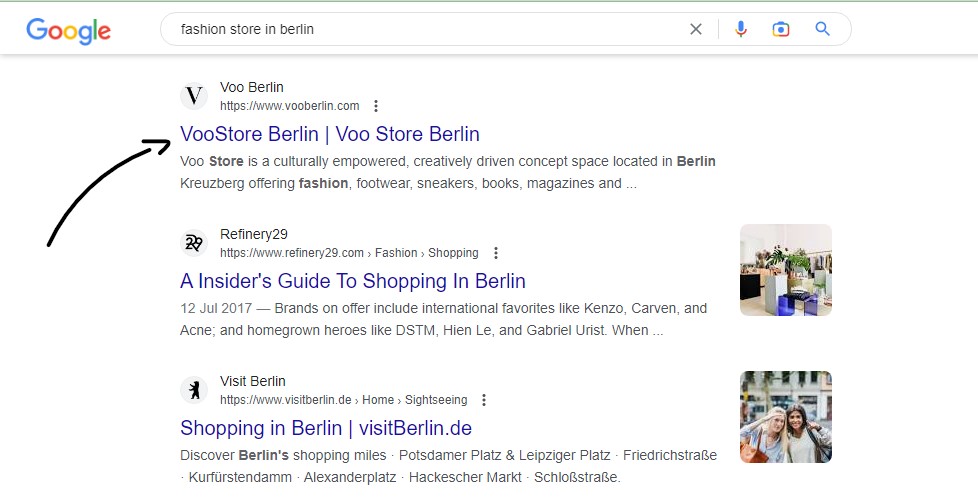
Step 5: Create a meta description
A meta description can significantly boost your search engine optimization. A meta description is a short text that appears just beneath the title tag on search engines and it can only be 160 characters long. You should ensure it accurately summarizes the content of your local landing page.

Step 6: Create relevant content
An oftentimes overlooked key aspect of this process is creating high-quality content that is relevant to your target audience. In order to do this, the text must be well-written, aligned with your branding, and accurately promote your services or offerings.
From an SEO point of view, the content should include relevant keywords and be properly positioned within your niche. Also, use H1-H6 headings to structure the content, which will help make it easy to read while also targeting the necessary keywords. A good rule of thumb is to include your primary keywords, and location (when relevant) in your H1, which is your main headline.
Step 7: Use calls to action
It is important to include a clear and straightforward call to action on your local landing page, ads, and general content. The CTA should encourage visitors to take action and interact with your page. CTA’s make it easy to convert ideal customers using simple phrases like “call today” and “order now.” Consider including a form or button that potential customers can use to take action such as “Book a consultation.”
Step 8: Use High-quality images
Images help both users and search engines to understand what the content on your page is about. The images help visitors to visualize the services and products that your local business provides. It is important to use high-quality images that are relevant to your business niche. Use photos that are optimized for the web and are not too big, as they can slow down the loading speed of your page.

Step 9: Include your business information
On your landing page, include your company’s email address, physical address (if relevant), and phone number. You could also upload your business’s physical location on google maps via your Google Business Profile. All you have to do is create an account, follow the prompts, and input your business location-specific details. Google My Business can improve your online visibility, making it easier for the consumer to locate and contact your company.
Step 10: Use plugins to optimize your landing page
If you decide to use WordPress, we encourage you to use plugins like Yoast SEO to optimize your landing page for search engines. Yoast SEO can help you optimize your title tag, meta description, and other elements of your landing page to improve its search engine ranking.
Step 11: Test and refine
Once your landing page is live, it is important to test it to see how it performs. You should analyze metrics such as bounce rate, conversion rate, and time on the page to see what’s working and what needs improvement. Use this information to refine your landing page and enhance its performance over time. Once your page meets your expectations it will be ready to go live!
Local SEO and landing pages
Local SEO is the practice we follow to optimize our clients’ websites for a specific location, such as a region or city, to attract local customers. Both local SEO and landing pages go hand in hand, as landing pages are an essential component of local search engine optimization strategies. Businesses can use landing pages to target specific audiences based on demographics, location, and several other factors. Targeting clients who are most likely to convert can assist in increasing the effectiveness of local SEO strategies.
How does having a local landing page impact your SEO?
A local landing page can help your search engine optimization efforts significantly. Here are some of the ways a local landing page might help your SEO:
- Improved user experience
You can modify local landing pages to give local clients a better user experience. This can include directions to your business, local area information, and other location-specific features that will assist potential clients in locating you.
- Conversion rates
You can significantly increase your website conversion rates by creating a landing page that is suited to the demands of your local audience. A landing page tailored to a local audience can help your company gain more customers.
- Backlinks
Creating a local landing page will help you gain backlinks from other local businesses. Backlinks from local businesses can assist in increasing the domain authority and search engine rankings of your website.
Must have features on an optimized local landing page
There are several features and aspects you can add to a local landing page to improve its conversion rate, boost your online presence, enhance your user experience, and much more. The following are must-have features for an optimized local landing page:
- Location-specific content: It is important to include location-specific content for your local landing pages. We use location-specific keywords, add local details like landmarks or local events, and provide directions to the business.
- Clear and compelling headline: The headline of your business’s local landing page must be clear, concise, and encouraging. It must provide an idea of what your business offers and why it is unique.
- Relevant CTA: We ensure that the call-to-actions are easy to find, they should also clearly communicate what the visitor should do next and what to expect. For our local landing pages, for example, we use something like “schedule an appointment” and “visit us today.”
- High-quality graphics and videos: It is essential to use high-quality videos and images that showcase your business and its services or products. This will help to engage potential customers and make your landing page more appealing.
- Contact information: Adding your business contact information to your local landing page is important. You should include your address, links to social media pages, email address, and phone number.
Local landing page examples
Here are some local landing page examples you can draw inspiration from:
Airbnb
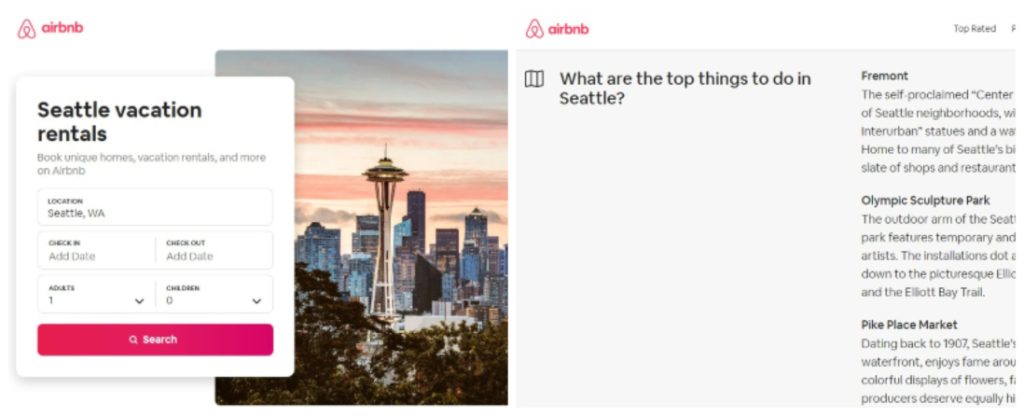
Airbnb’s local landing page for Seattle, Washington, is an excellent example of a landing page tailored for Local SEO. Location-specific keywords and relevant content, such as a list of prominent areas and local attractions, are included on the website. The page also includes a high-quality background photograph that highlights the city’s distinct charm.
Dominos pizza
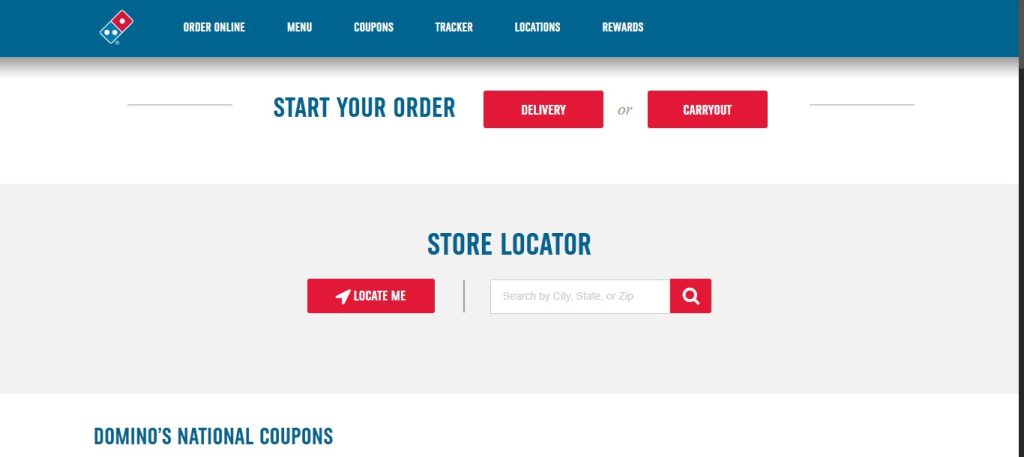
You can see that this Dominos Pizza local landing page is optimized for local search. When users click on the location menu, it provides them with location-specific information, including phone numbers, store hours, and addresses. It also offers visitors the ability to order online for that particular store location. This well-optimized Dominos local landing page includes a clear CTA encouraging customers to place an order.
Starbucks

When you visit the Starbucks website it has a CTA button that encourages visitors to “find a store”. This CTA button is linked to the Starbucks local landing page, which has a simple and user-friendly design that showcases the stores location specific information. The page lists the stores’ phone numbers, operating hours, addresses, and directions.
Wrapping things up…
By now it should be abundantly clear just how important a local landing page can be for your business. In a nutshell, it can significantly impact your business growth and drive potential local customers right to your company. You can also create a social media location page, like a Facebook location page, to reach a targeted demographic. By creating a localized Facebook location page and optimizing it, you can improve your brand’s online visibility. This will ultimately help you generate more leads and drive sales.
At Nomadic Advertising, we can help your business with creating optimized local landing pages as well as a Facebook location page. We specialize in creating tailored marketing strategies to help businesses achieve their long-term goals. Book a consultation with us today to learn more bout our services and how we can help your business grow.
FAQ section
Is it free to create a landing page?
Some website builders offer a free limited feature plan that allows you to create a landing page for free. However, most of the website builders that offer this plan do not allow users to access a wide range of features to create a unique landing page, but that might be a good compromise if you are set on doing this process with a low initial investment. Keep in mind, developing an efficient landing page may require additional expenses like hosting and domain registration.
Can I have a landing page without a domain?
Yes. You can create a landing page without a domain by using a page builder that provides a free domain or by using a subdomain.
Where should I post the landing page?
Your landing page must be accessible from your main website but separate from other web pages. Landing pages are typically designed as separate pages with different URLs. You can connect the landing page from the navigation menu of your main website or blog articles.
Are landing pages effective?
Yes, landing pages are very effective for generating leads and increasing conversion rates. Landing pages provide a clear call-to-action and targeted messages which help increase user experience and direct visitors.
How many landing pages can a website have?
A website can have several landing pages for specific marketing campaigns. There is no limit to the number of landing pages your business website can have. However, it is important that each landing page serves a unique purpose or target audience and provides relevant information to potential customers.





